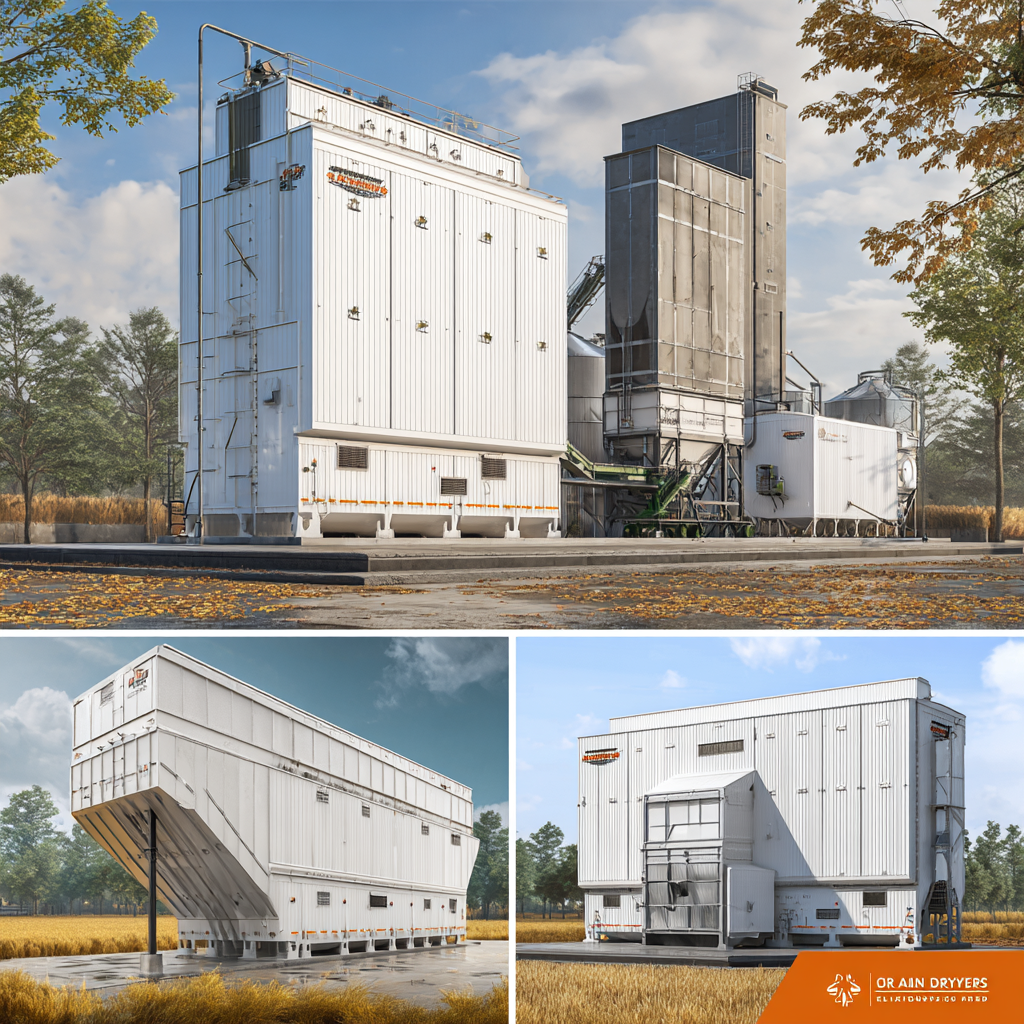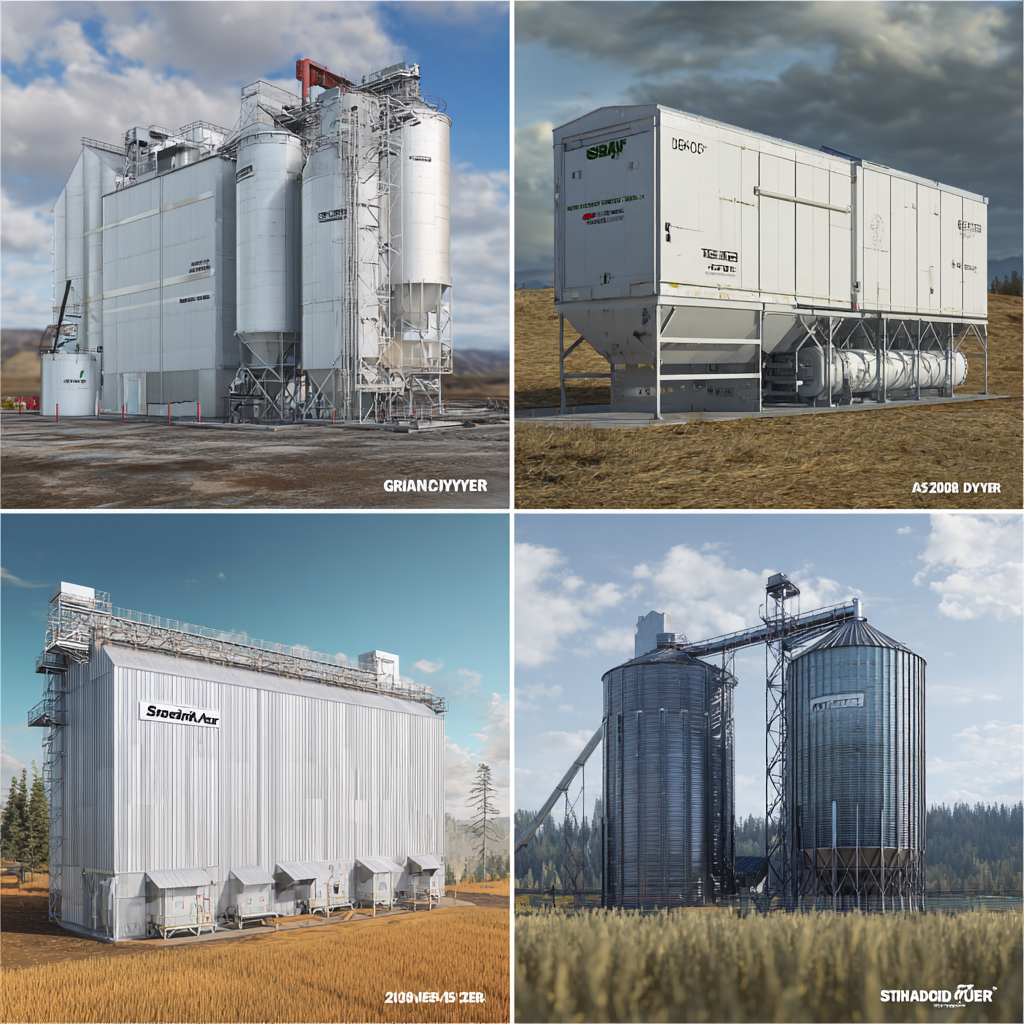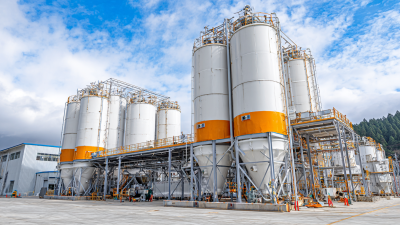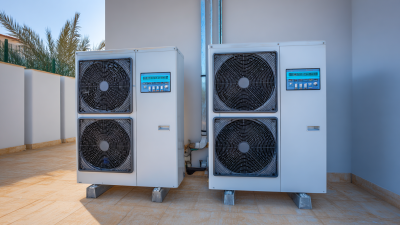Leave Your Message
In the quest for optimal harvests and maximum yields, choosing the right technology is crucial for farmers and agriculturalists alike. Among the most essential tools in modern farming is the Grain Dryer, a device designed to efficiently reduce moisture content in harvested grains. With the increasing demand for grain storage and preservation, finding a high-performing grain dryer has become more important than ever. As we approach the 2025 harvest season, it’s time to explore the top 10 grain dryers that offer not only efficiency but also a promise of durability and cost-effectiveness. This guide will provide valuable insights into the best options available on the market to ensure that your grains are harvested at their peak quality.

By delving into the latest innovations in grain drying technology, we can uncover tips and features that maximize productivity and protect your investments. Whether you are a seasoned pro or new to the world of grain farming, knowing the benefits and functionalities of these essential machines will empower you to make informed decisions. From energy efficiency to user-friendly interfaces, our curated list aims to highlight the best grain dryers that can cater to diverse farming needs, ensuring a successful and bountiful harvest in 2025.
In 2025, modern grain dryers have become indispensable tools for enhancing harvesting efficiency and maximizing crop yields. One of the primary advantages of these advanced systems is their ability to significantly reduce grain moisture content quickly and uniformly, ensuring that the harvested crop is stored safely without the risk of spoilage. According to the USDA, proper drying can increase the longevity of grains by up to 25%, translating into better quality and reduced losses during storage.
Moreover, contemporary grain dryers are designed with energy efficiency in mind. Data from a recent industry report by the National Grain and Feed Association reveals that state-of-the-art dryers can decrease energy consumption by nearly 30% compared to older models. This reduction not only leads to cost savings for farmers but also aligns with sustainable agricultural practices. The integration of smart technology in these dryers allows for real-time monitoring and automation, which can further optimize the drying process, reducing labor costs while enhancing overall productivity. In essence, the modern grain dryer is a vital asset in the quest for efficient and sustainable farming in an ever-evolving agricultural landscape.
| Rank | Dryer Type | Capacity (Bushels) | Drying Time (Hours) | Energy Efficiency (%) | Features |
|---|---|---|---|---|---|
| 1 | Continuous Flow Dryer | 1,000 | 6 | 90 | Automated Control, High Throughput |
| 2 | Batch Dryer | 600 | 4 | 85 | Portable, Easy Setup |
| 3 | Mixed-Flow Dryer | 800 | 5 | 88 | Low Noise Operation, Versatile |
| 4 | Suction Dryer | 700 | 7 | 80 | Gentle Drying Process |
| 5 | Indirect Dryer | 900 | 8 | 92 | Low Moisture Loss, Safe |
| 6 | Grain Bin Dryer | 1,200 | 10 | 87 | Optimized for Storage, Minimal Handling |
| 7 | Solar Dryer | 500 | Variable | N/A | Eco-Friendly, Low Operating Cost |
| 8 | Hot Air Dryer | 1,000 | 6 | 84 | High Capacity, Cost Effective |
| 9 | Convection Dryer | 800 | 5 | 86 | Even Drying, Easy Maintenance |
| 10 | Cyclonic Dryer | 700 | 4 | 89 | Compact Design, Quick Drying |
When selecting a high-performance grain dryer for efficient harvesting and maximum yield, it's essential to consider several key features. First and foremost, the drying capacity is crucial, as it directly impacts the amount of grain that can be processed in a given timeframe. A dryer with adjustable airflow and temperature settings will allow farmers to customize the drying process based on the type of grain and the environmental conditions, ensuring optimal moisture removal while preserving grain quality.
Another significant feature is energy efficiency. As the demand for sustainable agricultural practices grows, choosing a dryer that minimizes energy consumption can lead to considerable savings. Modern grain dryers often incorporate advanced technologies, such as automation and sensors, which help monitor and regulate drying conditions in real time, reducing waste and enhancing performance. Additionally, ease of maintenance and robust construction are vital for ensuring longevity and reliable operation throughout the harvesting season. By focusing on these key attributes, farmers can make informed decisions that enhance productivity and profitability.
This bar chart illustrates the drying efficiency of the top 10 grain dryers in 2025. The efficiency percentage represents how effectively each dryer performs in removing moisture from harvested grain, which is crucial for maximizing yield during the harvest season.
 Investing in grain dryers can significantly enhance the cost-effectiveness and return on investment (ROI) for farmers, particularly in the current economic climate. With grain prices at historically low levels, maximizing efficiency becomes crucial. By utilizing advanced drying technology, farmers can reduce energy consumption and mitigate expenses related to fossil fuels. Innovative systems that exploit alternative fuel sources not only lower operational costs but also align with sustainable practices, offering significant long-term financial benefits.
Investing in grain dryers can significantly enhance the cost-effectiveness and return on investment (ROI) for farmers, particularly in the current economic climate. With grain prices at historically low levels, maximizing efficiency becomes crucial. By utilizing advanced drying technology, farmers can reduce energy consumption and mitigate expenses related to fossil fuels. Innovative systems that exploit alternative fuel sources not only lower operational costs but also align with sustainable practices, offering significant long-term financial benefits.
Moreover, implementing a reliable grain storage solution can empower farmers with greater flexibility in managing their harvests. On-farm storage facilitates precise timing for selling grain, optimizing market conditions, and ultimately increasing profitability. However, the initial investment for storing equipment must be carefully analyzed against potential returns. Tools that help in evaluating storage costs, production rates, and payback periods can be invaluable in making informed decisions. Farmers who strategically integrate efficient grain drying and storage solutions are likely to see a substantial impact on their overall yield and financial stability.
As the agricultural sector continues to innovate, grain drying technology is evolving at an impressive pace.
The year 2025 promises to showcase advancements that will revolutionize how farmers approach grain harvesting and storage. One of the most notable innovations is the integration of
AI and IoT in drying systems, which allows farmers to monitor moisture levels and environmental conditions in real-time. This capability not only enhances the efficiency of drying processes but also ensures that grain quality is preserved, reducing waste and maximizing yield.
Another significant trend is the shift towards energy-efficient grain dryers. As sustainability becomes a crucial focus, manufacturers are developing systems that utilize
renewable energy sources, such as solar and biomass, to power drying operations. These eco-friendly solutions not only lower operational costs but also minimize the carbon footprint of agricultural practices.
Furthermore, advancements in heat recovery systems and insulation technologies promise to improve drying efficiency, allowing farmers to stay competitive while contributing to a greener planet. Together, these innovations will redefine grain drying in
2025, presenting farmers with tools to optimize their harvests like never before.
When selecting a grain dryer, it's essential to consider the specific crop type and environmental conditions you are dealing with. Different grains such as corn, wheat, and soybeans have unique moisture content requirements that can affect drying efficiency and ultimately yield quality. For instance, corn typically requires a higher drying temperature compared to other grains. This means that choosing a dryer capable of adjusting temperatures based on the crop is crucial for achieving optimal results.

Tips: Always check for adjustable features in your grain dryer, like temperature settings and airflow control. This flexibility can significantly enhance the drying process tailored to the specific requirements of each crop.
Moreover, environmental conditions like humidity and temperature can greatly influence the effectiveness of grain drying. When operating in high humidity areas, a dryer equipped with good dehumidification capabilities will function better, preventing moisture from re-entering the grains after the drying process. Selecting a model that accounts for local weather patterns can safeguard your harvest from spoilage.
Tips: Monitor local weather forecasts to plan your drying schedule effectively. Consider investing in dryers that feature built-in humidity sensors, ensuring that your drying method adapts to fluctuating conditions automatically.






